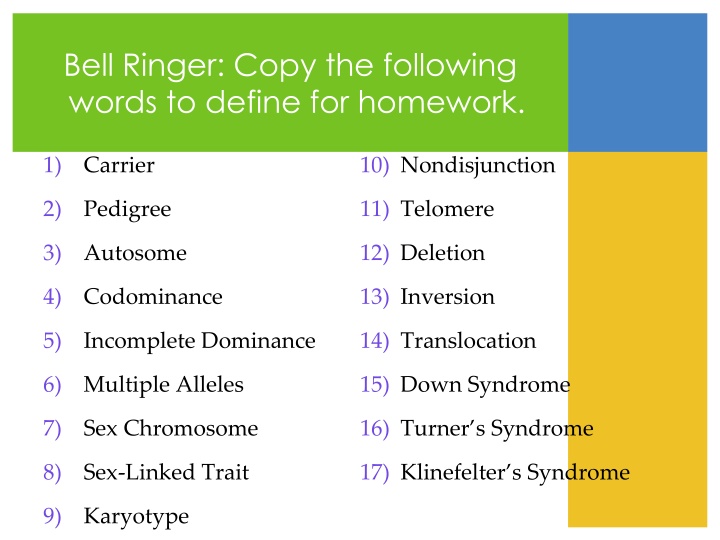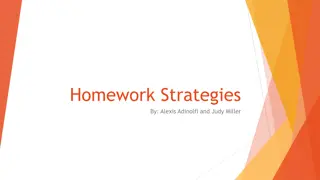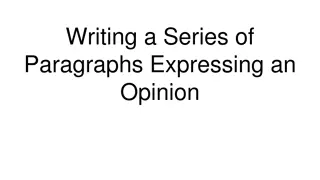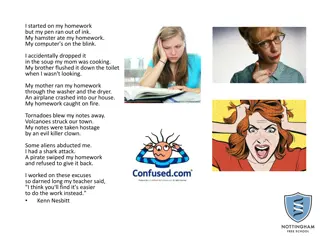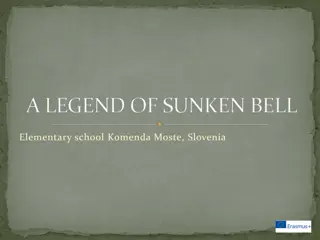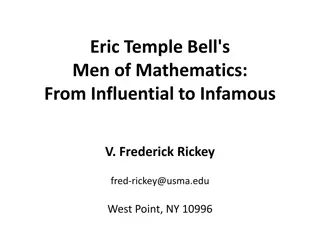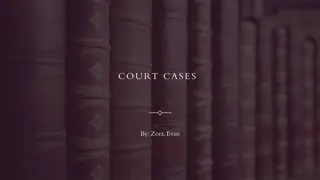Bell Ringer: Copy the following words to define for homework.
Explore the definitions of carrier, pedigree, autosome, and codominance along with other genetic terms like nondisjunction, telomere, deletion, and more in this informative content. Understand complex inheritance, human heredity, and genetic disorders such as cystic fibrosis and albinism. Unravel the mysteries of genetic traits and their impact on individuals and future generations.
Download Presentation

Please find below an Image/Link to download the presentation.
The content on the website is provided AS IS for your information and personal use only. It may not be sold, licensed, or shared on other websites without obtaining consent from the author.If you encounter any issues during the download, it is possible that the publisher has removed the file from their server.
You are allowed to download the files provided on this website for personal or commercial use, subject to the condition that they are used lawfully. All files are the property of their respective owners.
The content on the website is provided AS IS for your information and personal use only. It may not be sold, licensed, or shared on other websites without obtaining consent from the author.
E N D
Presentation Transcript
Bell Ringer: Copy the following words to define for homework. 1) Carrier 10) Nondisjunction 2) Pedigree 11) Telomere 3) Autosome 12) Deletion 4) Codominance 13) Inversion 5) Incomplete Dominance 14) Translocation 6) Multiple Alleles 15) Down Syndrome 7) Sex Chromosome 16) Turner s Syndrome 8) Sex-Linked Trait 17) Klinefelter s Syndrome 9) Karyotype
Benchmark Test Info Point Breakdown 52 pts Participation 48 pts (2pts each) for the 24 questions we ve already covered. TALKING/LOOKING AROUND will result in the loss of your 52 participation points.
Bell-Ringer Grab a packet of guided notes from the back table.
Complex Inheritance and Human Heredity 11
The Big Idea Human inheritance does not always follow Mendel s laws.
Main Idea #1 The inheritance of a trait over several generations can be shown in a pedigree.
Recessive Genetic Disorders Remember - recessive traits can be masked by a dominant trait. Therefore, a person who is heterozygous for a characteristic may be considered a carrier for that trait since it will not be expressed. Even though a carrier is not affected by the trait, they can pass the trait on to future generations. In order for the recessive trait to show in the individual, the person must be homozygous recessive.
Common Recessive Disorders Cystic Fibrosis Affects the mucus-producing glands, digestive enzymes, and sweat glands Chloride ions are not absorbed into the cells of a person with cystic fibrosis but are excreted in the sweat Without sufficient chloride ions in the cells, a thick mucus is secreted The mucus clogs ducts in the pancreas, causes problems with digestion, and blocks some of the tiny passages in the respiratory system.
Common Recessive Disorders Albinism Caused by altered genes, resulting in the absence of melanin (color pigment) in the hair and eyes Common characteristics include: white hair, very pale skin, and pink pupils Tay-Sachs Disease Caused by the absence of an enzyme responsible for breaking down fatty acids The fats begin accumulating in the brain, destroying brain cells and mental deterioration.
Dominant Genetic Disorders Some genetic disorders are controlled by a dominant allele. People who have only one copy of this allele will display the trait. Only those who are homozygous recessive will not have the disorder. Huntington s Disease Disease that gradually destroys the nervous system. Symptoms usually begin between the ages of 30 and 50. Achondroplasia Genetic condition that causes small body size and limbs that are comparatively short. This is the most common form of dwarfism.
Pedigrees A pedigree is a diagram that traces the inheritance of a particular trait through several generations. Males are represented by squares, and females by circles. One who is affected by the trait will have a symbol that is colored in, while those that are unaffected by the trait will have an unfilled symbol.
Lets Practice!!! Make this correction: Second question for #3 should read, What are the sexes of the children?
Main Idea #3 Chromosomes can be studied using karyotypes.
Karyotypes A karyotype is a picture of a person s chromosomes. Chromosomes are taken from the stage of metaphase and stained. They are then placed in order of decreasing size. The last pair is the sex chromosome pair. Disorders caused by an incorrect number of chromosomes or malformed chromosomes are the easiest to identify using a karyotype.
Telomeres Telomere caps consist of DNA associated with proteins.
Nondisjunction Homologous chromosomes separate during the final steps of meiosis to ensure that each developing sperm or egg receives one copy of each chromosome. Nondisjunction is the failure of a pair of homologous chromosomes to separate properly. Resulting sex cells will either have an extra chromosome (trisomy) or a missing chromosome (monosomy).
Down Syndrome One of the most common disorders due to nondisjunction is Down syndrome, also known as trisomy 21. Down syndrome occurs when the person has a third copy of the 21st chromosome. Common features include: short stature, heart defects, distinctive facial features, and mental disability.
Disorders Due to Nondisjunction of Sex Chromosomes Klinefelter Syndrome (XXY) Jacob s Syndrome (XYY) Trisomy X Syndrome (XXX) Turner s Syndrome (XO)
Types of Mutations Mutations can involve an entire chromosome or a single DNA nucleotide, and they may take place in any cell. Germ-cell mutations occur in an organism s gametes (germ cells). These do not affect that organism, but may be passed on to their offspring the germ cell becomes fertilized. Somatic mutations occur in an organism s body cells and can affect the organism. These mutations cannot be passed on to offspring. Some examples include skin cancer and leukemia. Lethal mutations cause death, usually before birth.
Chromosome Mutations Deletion (1)- results in the loss of a piece of chromosome due to the breakage of that chromosome; genetic information will be lost Duplication (2)- results in the copying of a segment of the chromosome Inversion (3)- a segment of a chromosome breaks off and reattaches itself to the chromosome in a reversed order
Chromosome Mutations Insertion (1) - a segment of a chromosome breaks off and reattaches itself to another homologous chromosome Translocation (2) - segments of chromosomes break off and exchange places on different chromosomes
Chromosome Mutations Nondisjunction is also a type of chromosome mutation. It affects the total number of chromosomes instead of pieces of individual chromosomes.
Bell-Ringer Copy your homework for the week! 1/13 1/17 Homework: Monday: Chapter 11 Assessment pg. 319-321 1-30 Omit #s 11, 16, 18, 19, 20, 27, 28 Tuesday: STUDY FOR TEST Wednesday: Ch. 12 Vocab BRING YOUR BOOK THURSDAY Thursday: Finish Ch. 12 Guided Reading Friday: NONE
Genetic Disorder Foldable 1. Achondroplasia 7. Sex-Linked 2. Albinism 8. Tay-Sachs 3. Cystic Fibrosis 9. Turner s Syndrome 4. Down Syndrome Tell if the listed disorders are dominant or recessive and give a brief description of each. For Sex-Linked describe the two that we discussed in class. 5. Huntington s Disease 6. Klinefelter Syndrome
